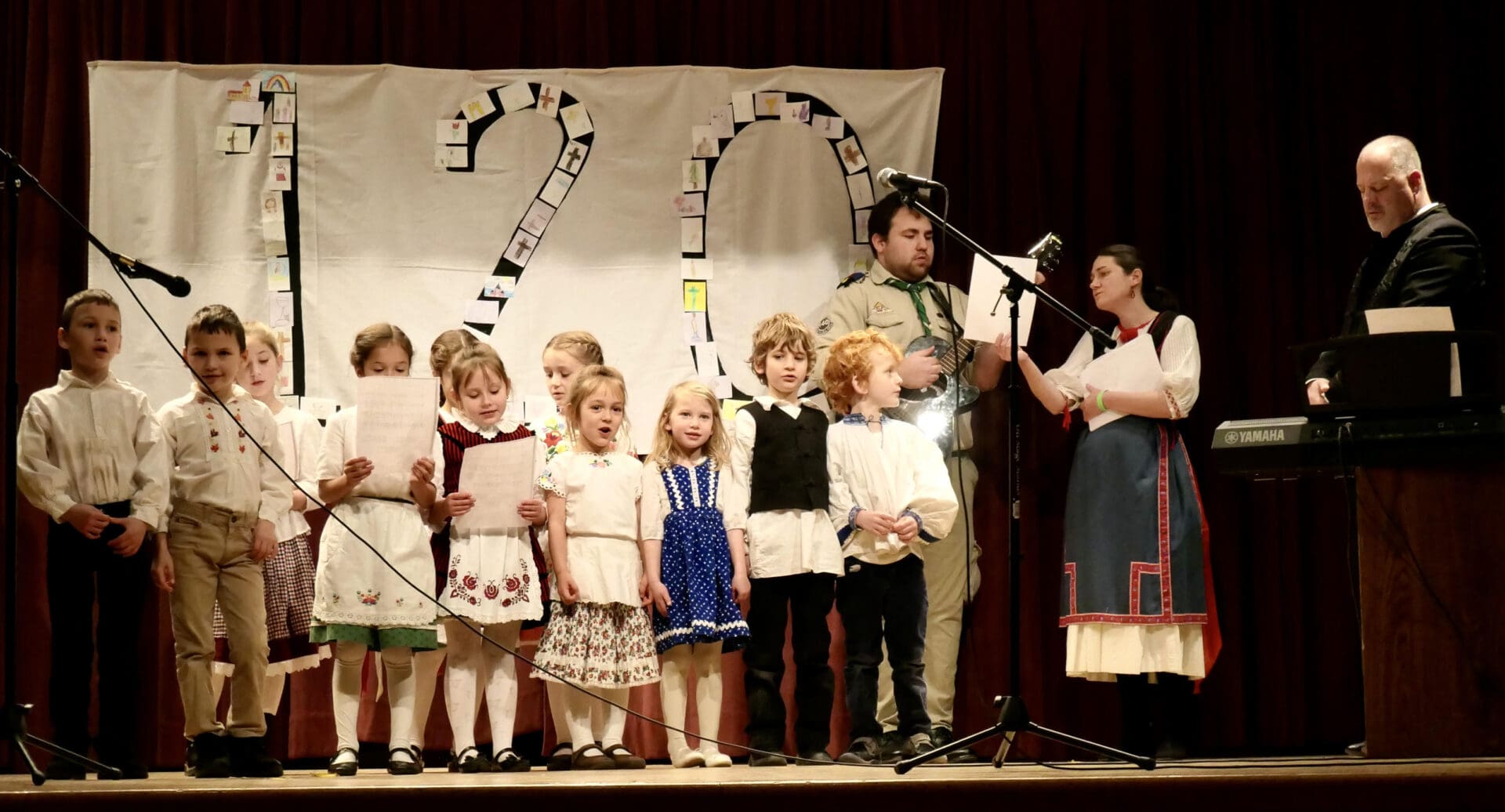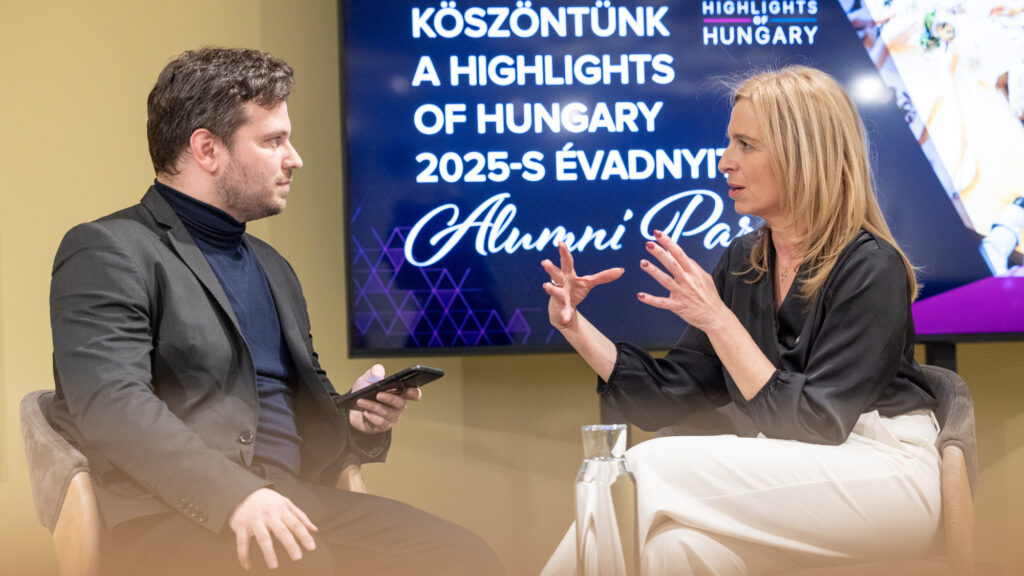‘At the turn of the 20th century, Hungarian Americans in Passaic had nothing. It was difficult to maintain a parish. At the turn of the 21st century, even today, when we seem to have so much, it is still very difficult to maintain a parish! We need to follow the example of those who came before us, by remembering that our faith needs to be in God and our strength needs to be in one another. If we keep this in mind, those preparing to celebrate the church’s 200th anniversary will turn to these chronicles for inspiration and guidance.’
The quote is taken from the 100th anniversary book of St Stephen RC Magyar Church in Passaic, New Jersey (NJ), founded in 1903. It was written by Tamás Marshall, teacher, scout leader, church council member and parish youth officer. His thoughts are perhaps even more relevant 20 years later, and so is his mission: to encourage the youth to visit the church, i.e., encourage their parents to come along, bring their children and actively participate in the life of the parish—thus passing on their faith and their Hungarian language, culture, and identity to the next generation.
When our family first visited the St Stephen Church on 3 July 2022, we immediately felt at home. The interior, the beautiful altar and the magnificent window decorations were much like the ones back home (even reminded me of my Transylvanian grandparents’ village church). Everyone we met spoke Hungarian (even though some with a peculiar American accent), and we were welcomed with openness and kindness. Father László (Laci) Balogh, celebrating his 25th Silver Mass on that day, greeted us as if he had known us for a long time; Father Levente Bokros, visiting from Hungary, who co-celebrated the mass, told us: ‘Jesus knew why you should come here’, and then addressed the others: ‘Welcome them, you are good at this’. He was referring to the fact that by now it is the only surviving Hungarian parish on the East Coast of North America. Over the past few decades, all the others have either closed and disappeared, as the St Stephen Church and parish in New York, or are no longer independent parishes, as the St Ladislaus Church in New Brunswick, NJ.
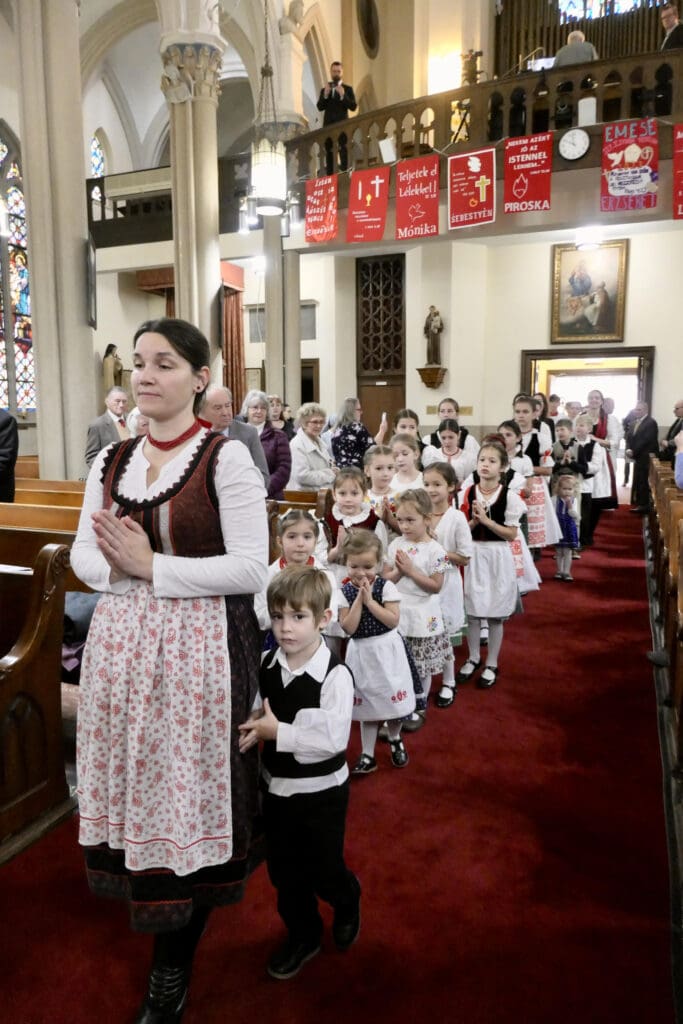
The pastors’ words and the parishioners’ kindness meant a lot to our family of five, right after our arrival to a very new country. Since then, we have become active participants of parish life, including the celebration of the 120th anniversary on November 12. As I listened to Bishop Kevin J. Sweeney of Paterson’s homily, I recalled our first time there and wondered: how many people have been welcomed here before us during these 120 years? How many baptisms, first communions, confirmations, weddings and funerals have taken place within the walls of this building? I tried to read the signs of joyous and sad moments of this long history from the portraits of the former Hungarian pastors and administrators taken from the vestry and displayed on the church pillars to mark the anniversary. My thoughts echoed those of the bishop, who began his homily as follows: ‘Just think of how many baptisms —i.e. how many events where we first receive the gift of faith—have taken place here in 120 years!’ Referring to the Gospel of that day, he stressed that living in a society and culture that does not support the expression of our faith, it is particularly important to recognize our own responsibility and to take care—every day—of the ‘light’ (of the faith) we have received, preparing ourselves for any kind of situation that may arise.
In his homily, Bishop Sweeney repeatedly emphasized how happy he was to see so many young people: the altar boys, scouts and parishioners dressed in Hungarian folk costumes—who, he said, are here because of their parents, grandparents, and great-grandparents:
‘Our country has been blessed by people coming to us from other countries. Not everyone appreciates that, but your presence here today is a testament to the common faith we share and what these young people have received from their parents and grandparents who are also here with us today, whether in the church, in faraway Hungary, or in heaven. We are responsible for all what we receive in our family and what we pass on to our children and grandchildren. In today’s society and culture, the light of faith is threatened in so many ways, it therefore needs to be especially protected, and nowadays we can best do this at home, in our families.’
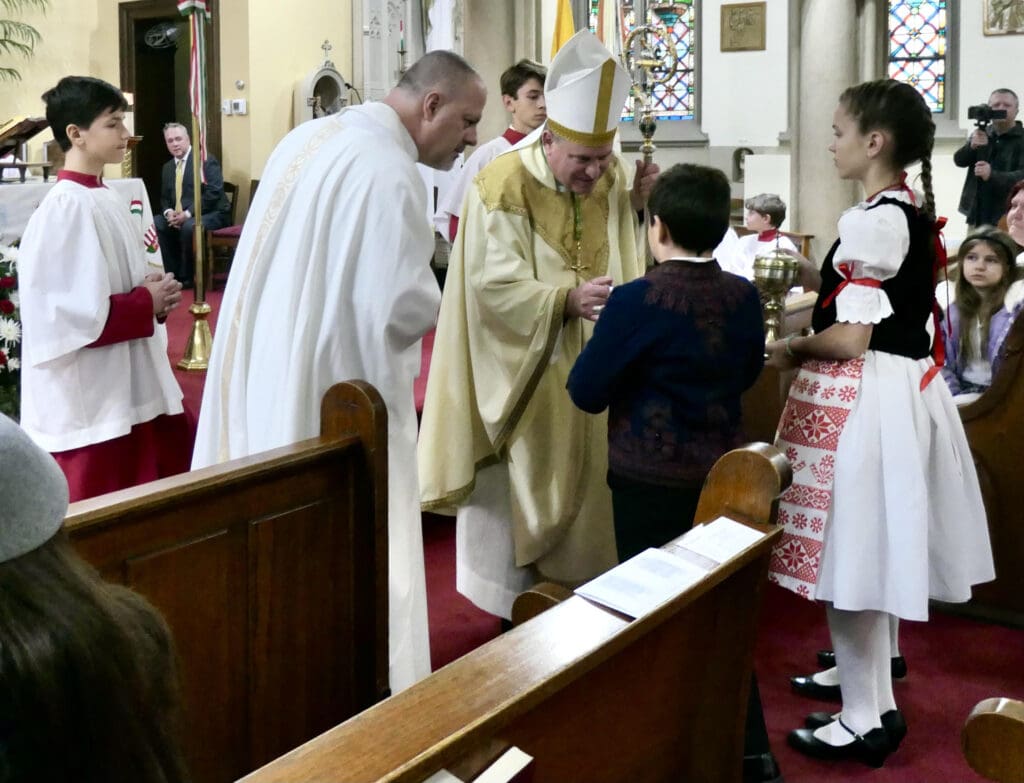
Referring to the forthcoming Thanksgiving, the bishop said: ‘The Eucharist is our prayer of thanksgiving. Every time we gather in church as God’s family and listen to His words, we give thanks to Him. Today we also give thanks for the 120 years, for this wonderful building with its beautiful windows, which Father Laszlo has cared for so well during the past few years, with your help, and for the glory we share within these walls. The feast of Thanksgiving reminds us that every day is a day of thanksgiving’. He concluded his homily by reminding us that we have so much to be thankful for: for God, for our parents and children, for the blessings we receive daily, for the gift of our existence and our faith, and for those who serve us through their vocation or profession. Later on, the new ushers were blessed by the bishop.
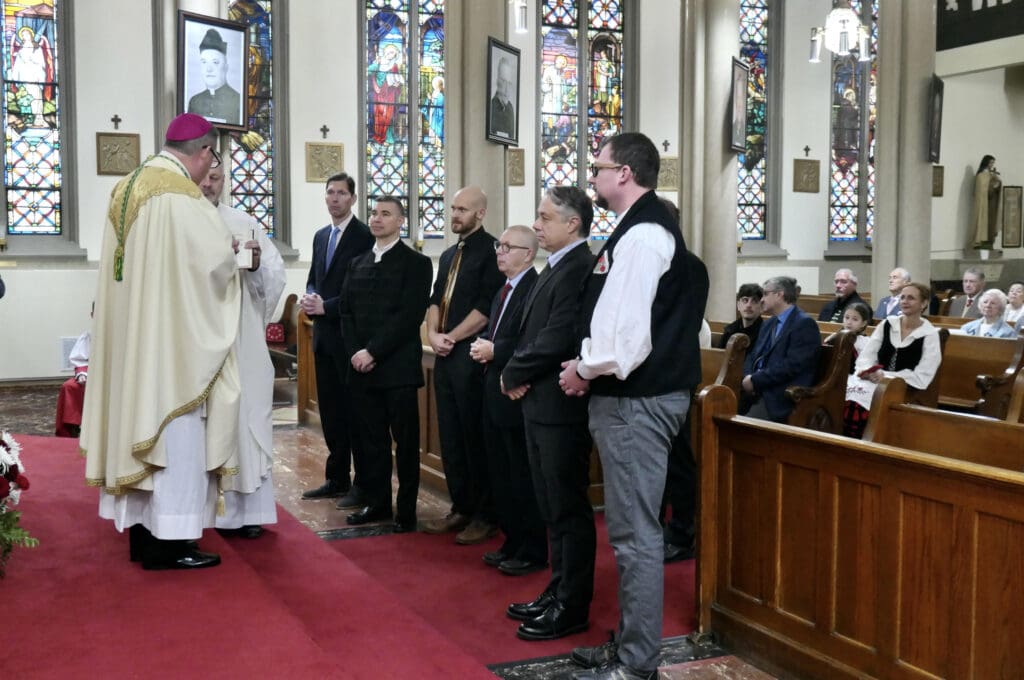
After the holy mass, a reception was held in the Mindszenty Hall of the former school building next to the church, followed by a festive show in front of approximately a hundred guests. It included recitation and performances by a choir and a folk dance group. In front of the nearly 100 guests, all were performed by those children of the community who receive religious education at the church. The festive programme was preceded by a speech from Father László Balogh, who has been serving in Passaic for five years, recalling the words of the founding pastor, Father Géza Messerschmiedt, who greeted the bishop consecrating the church on 21 August 1904 as follows: ‘This is the day the Lord has given us, let us rejoice and be glad in it’. He then asked: ‘What does 120 years mean; is it a lot or a little?’ And then answered it means 1,440 months, 43,830 days, 1,051,920 hours, 63,115,200 minutes, 6,240 hours of Sunday Mass, 11 parish pastors, who knows how many visits by bishops, countless guests and thousands of people who have come here, prayed, made peace with God, with each other or with themselves during these 120 years. Perhaps the latter is the most important, because all the others are based on it, he noted.
‘Church is a meeting point; the place where we meet with God who created us, who forgives us and strengthens us. The place where we say goodbye to those who have gone. Jesus gives us hope that we meet again on the other side. How many times has the bell tolled for the dead? Who can count it, or the tears, the words of praise, the children’s cries, the hymns, the prayers, the petitions, the thanksgivings, the eulogies, the Our Fathers, the confessions, the weddings vows—in all these 120 years?’
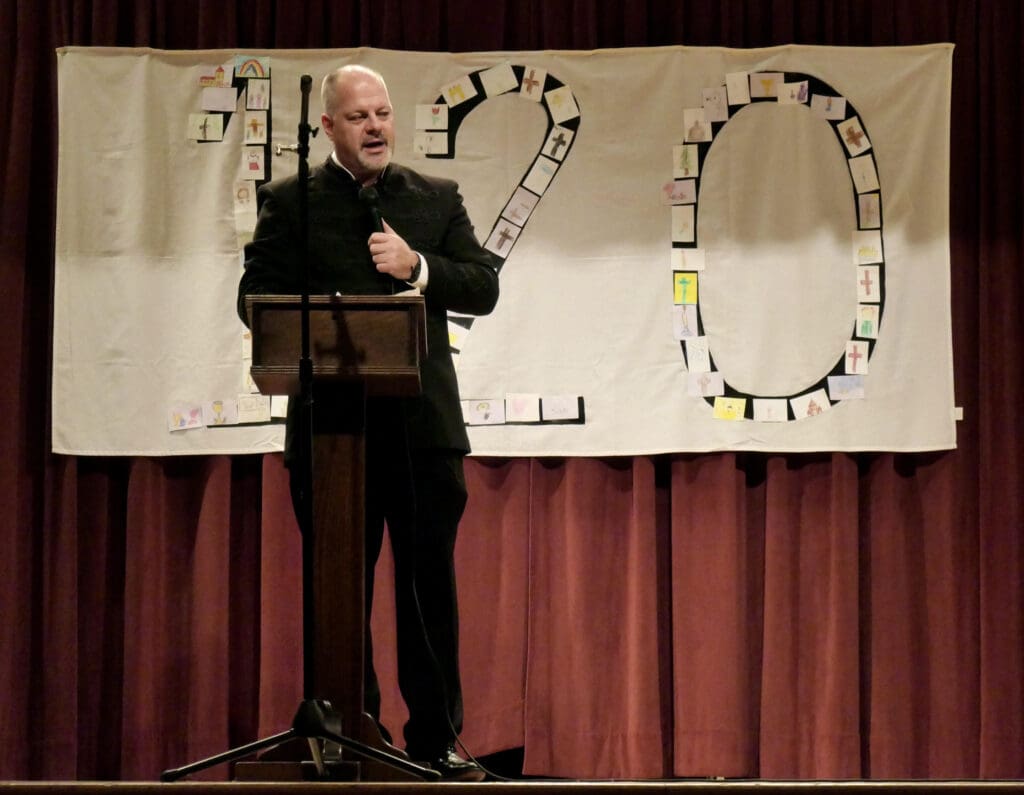
As he explained, in the kingdom of God there is no time and no place, it is eternity; and the church is the place where we meet eternity. Then he asked: ‘Do we feel the tension between 120 years and eternity?’
He went on to remind the audience that St Stephen is a Hungarian church, built and maintained with a Hungarian mind and heart, in the US, in the country that we have enriched with our own special Hungarian thinking and talent. ‘We are all more or less Americans, whether we deny it or not. We are all more or less Hungarians, whether we deny it or not. We are also children of God—I hope we don’t want to deny it. We are loyal to our earthly homeland—of which we have two: the United States and our Hungarian homeland, which is also the homeland of those who were born here or on the way coming here, and who call Hungary their homeland—and to our eternal homeland, which awaits us all. Let us give thanks to God, to the founders, to our ancestors, and pass it on to our children so that in 120 years a pastor could tell your great-grandchildren the same: thanksgiving, in English and Hungarian. God bless the parish of St. Stephen’s,’ concluded Father László.
After the ceremony, I turned to some of the most important figures of the community. Tamás Marshall, in charge of youth activities, organized the programme of nearly 30 children and a few parents on stage, with the help of catechists Ági Bíró Vámos and Orsolya Skreli, and folk dance teachers Tamás and Lívia Schachinger. He said that while contemplating the programme, they realized that they needed to show what is unique to the Hungarian American diaspora: the presence of many children and young people. ‘Today’s show is a nice representation of our community: there are people like you who are relatively new, and there are people whose grandmothers had already been born here—these people are connected by their common Hungarian language and culture as well as the significant experience they have together in this church, in the Hungarian school and in the Hungarian scouting. And it also shows that although there are both white-collar parents and simple blue-collar workers among us, when we are together, that does not matter either. We are all Hungarians who love our children, our community and God; these are the things that keep us together.’ As he was born here, he was able to attend the 80th and 90th anniversaries, and he helped organizing the 100th. The 90th anniversary service was also beautiful, but it was seen more as a ‘prelude’ to the 100th, which they had been preparing for two years: with a memorial book and a musical programme in cooperation with the Hungarian parish at New Brunswick, NJ. Similarly, this 120th anniversary occasion is also considered as a prelude to the 125th anniversary, for which preparations have already begun. They are planning again a memorial book, and they want to find and re-connect with certain senior parishioners who for various reasons no longer attend masses regularly. At Father László’s initiative, they have also started collecting a small piece of soil from each county of Hungary to place it under the altar as a message: the church is on Hungarian land.
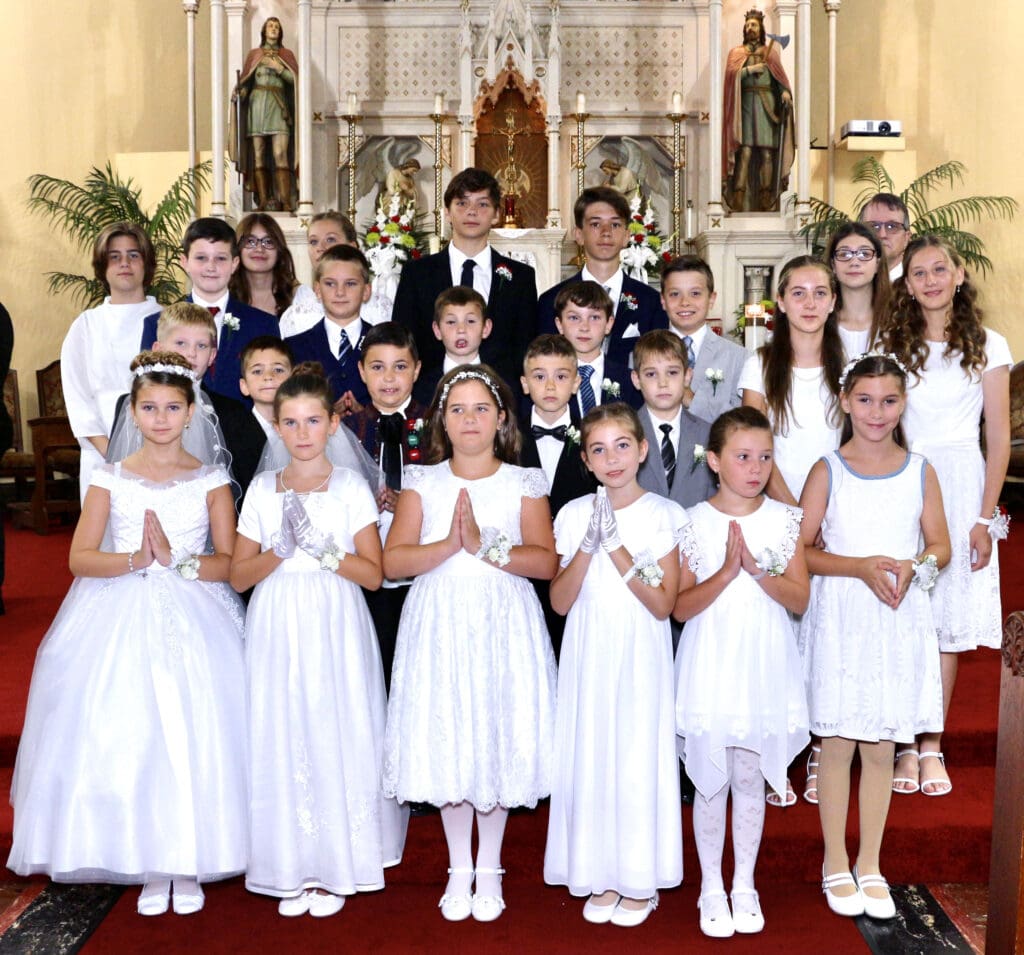
Ferenc Keresztes (Feri to all) was the church cantor for fifty years, then moved to faraway Alabama last year with his family of seven. However, after the August 20 church farewell that he attended, he returned to Passaic again to serve as organist during the mass and the programme in the absence of the current cantor. He said he was honoured to be asked and was happy to accept, travelling 20 hours with four of his five children, aged between 5 and 14. ‘I love this church so much, the community here feels like my extended family, and I really hope that with love and acceptance of each other, they can be a real family and survive in the long term. It felt good to come back, the programme was beautiful, but it was sad to see that we only gathered a hundred people at most’.
István Horváth also expressed disappointment and regret because the number of participants was lower than expected, despite all the preparations and intensive publicity. He has been serving the church and parish for 15 years, as a kind of all-rounder: not only a permanent parish council member and often council president, but also responsible for the occasional renovations and regular kitchen duties (there is a monthly community lunch at the church). As always, he and his wife and their daughter, as well as his regular helper and best friend Eva Aminger, prepared the food offered. ‘As usual, we did not know in advance how many people would come, so we calculated with 100, and unfortunately it worked out.’
Emese Kerkay Maczky, the former principal of the Hungarian school (for 30 years), created the colourful panels that decorated the walls of the Mindszenty Hall, showing the rich life of the parish community, both literally and figuratively.
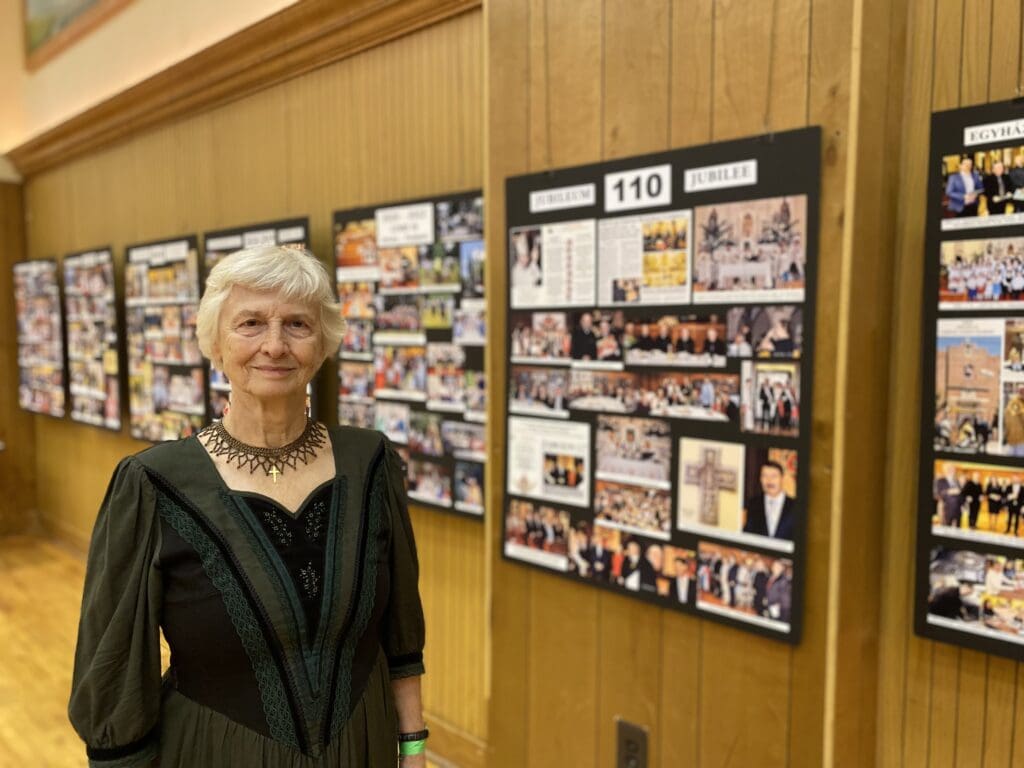
In the 90s, she made a series of 20–30 Hungarian history wall panels for the then existing American Hungarian Museum in Passaic, on the themes of 1848, Trianon, 1956, etc. This inspired the 100th anniversary organizing committee to have the life and events of the parish over the past 100 years presented also in this spectacular way. Emese was asked to prepare a series of about 30 tables for the 100th anniversary. Ten years later, for the 110th anniversary, she only made a few, but now, as preparing for the 120th, she completed those as well. Before the digital age, she used paper photos that she had collected for several months, but this time, covering the last 10–20 years, she worked exclusively with photos taken by herself and her husband, László Kerkay, with considerably less collecting work, but still with a lot of volunteer hours invested: sorting the photos, writing photo captions, printing and gluing them took several days for each of them. From the last 20 years, the sections on the previous two pastors, Father Mustos and Father László Vas stand out, highlighting not only their services, but also their funerals. Emese has put together a tableau of the 110th anniversary of the church in 2013; one about the 2015 dedication of the Hungarian chapel of the Basilica of the National Shrine of Immaculate Conception (the importance of which for the United States is similar to that of the Basilica of Esztergom in Hungary), which was attended also by Cardinal Péter Erdő in Washington, DC; one about the transition year of 2018 (between Father Vas and Father Balogh), one covering the difficult years of the Covid pandemic, and another the Silver Mass of Father László in 2022. A summary of several August 20 picnics and celebrations also filled up a wall panel and there is a separate one displaying the memorable St Stephen’s Day celebrations of 2023, with the mass celebrated by Bishop András Veres from Hungary, when the parish had a first communion and confirmation of 26 children—a rare event in the recent half-century history of the parish or even in the whole diaspora.
May God bless and keep the parish of St Stephen of Passaic for at least another 120 years!

